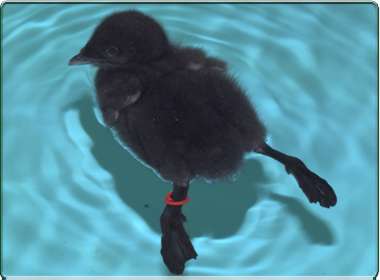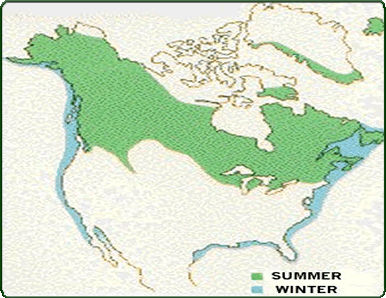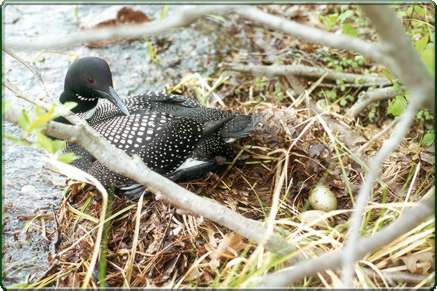Loon Study - Frequently Asked Questions |
| Which state has the most common loons? |
|
| How long each year do common loons stay within their summer (breeding) range? |
| Loons return to northern forested lakes and rivers in the springtime, usually in April or early May. The breeding range includes Alaska and much of Canada south to portions of Washington, Idaho, Montana, North Dakota, Minnesota, Wisconsin, Michigan, New York, Vermont, New Hampshire, and Maine. Breeding loons, like those radiomarked in this study, leave breeding areas in late October to early November. Loons spend the winter season along the Atlantic, Pacific, and Gulf of Mexico coasts. Some loons winter on inland reservoirs. |
| How far can common loons fly in one day? |
| |
| What is the farthest a common loon has flown in one migration? |
| |
| Do common loons return to the same place to nest where they were hatched and raised as chicks? |
| Extensive banding and observation of marked loons in northern Wisconsin has shown that loons first return to the breeding grounds at age 2-5 years, with males tending to return nearer to their natal territory than females. Both sexes tend to wander and use many different lakes as "floaters" for 2 to 3 years before settling. Males and females both show a striking age-dependent pattern in the means they use to gain a territory: when 4-5 years old, they usually settle in a vacant territory with a mate and thus found a new territory. If they have not acquired a territory by 6-8 years of age, however, they usually attept to seize a territory from an established owner after a violent and prolonged territorial battle. Such battles can be dangerous. In fact, about one-third of all territorial takeovers among males result in the death of the displaced male owner. For additional information on common loon territorial behavior, visit The Loon Project website provided by Dr. Walter Piper at Chapman University.
|
Where do common loon’s nest? |
Loon nests are usually situated on a low mass of vegetation near water, often on an island and usually contain two olive-brown, lightly spotted eggs. Both adults incubate the eggs and share in care of the young.
|
|
What is the difference in appearance between a male and female common loon? |
Seasonally, the adult common loon's plumage changes dramatically between the breeding and non-breeding seasons. The photo above which shows an adult on its nest is indicative of the loon's breeding (summer) appearance.
|
|
Why does the common loon chick ride on its parent's back? |

Biologists suspect there are two primary reasons for back riding:
|
|
How long do common loons live? |
|
|
What do common loons eat? |
|
|
Why do common loons make calling noises at night? |
|
|
|
How many different kinds of loons are there? |
|
|
 |
Page Last Modified: April 3, 2018



